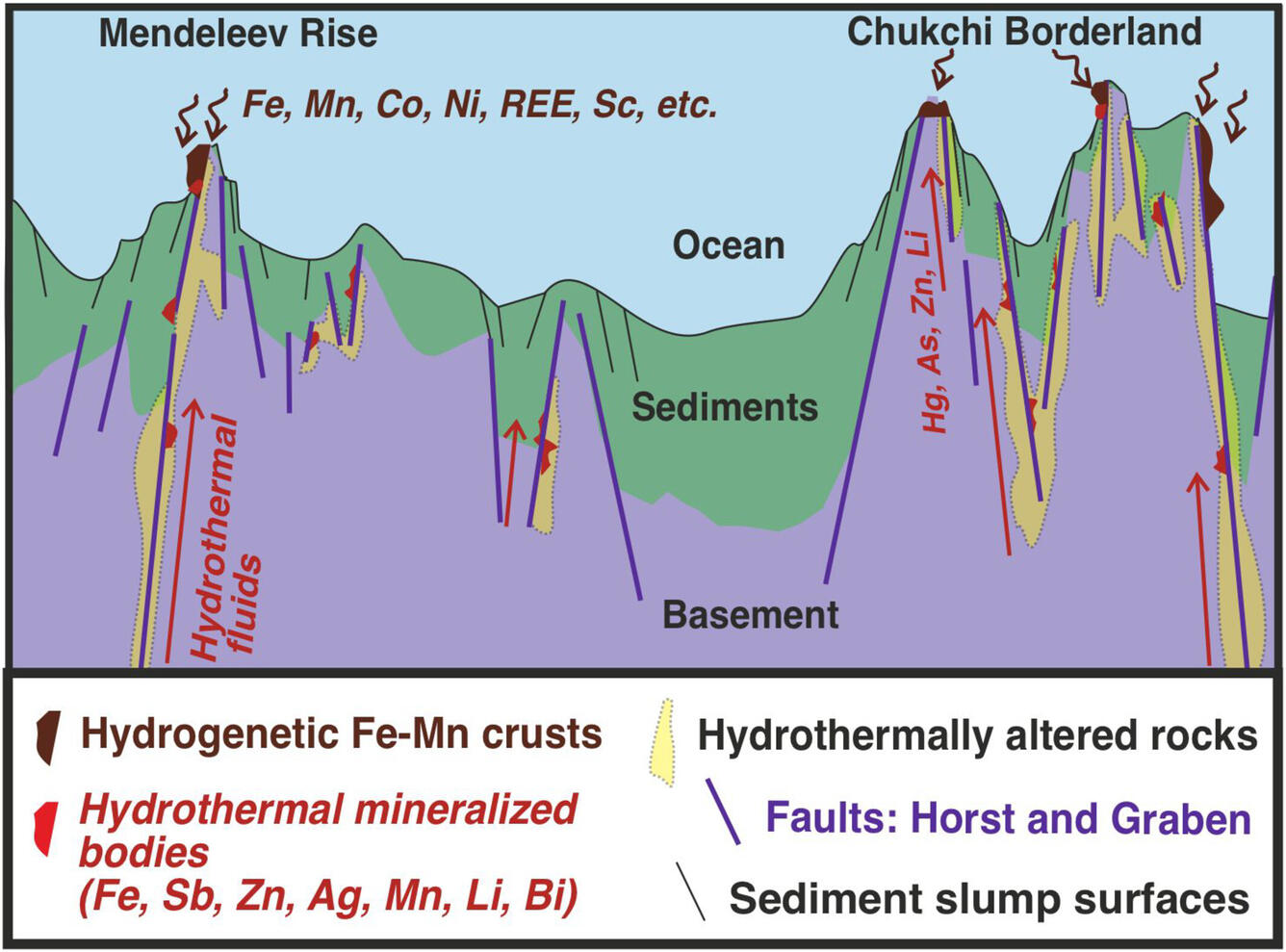Schematic deposit model showing formation of hydrothermal minerals along faults

Detailed Description
Schematic deposit model showing formation of hydrothermal Fe- and Mn-oxide deposits at depth along faults during the Neogene (∼8.5–4.8 Ma) from ascending hydrothermal fluids driven by frictional heating and other fault-related processes; the deposits may have experienced minor uplift along faults during the Neogene and Quaternary, and variably exposed as seafloor outcrops predominantly by sediment slumping, rock falls, and other gravity-driven processes. Hydrogenetic Fe-Mn crusts formed at the seabed on all rock outcrops predominantly from dissolved and colloidal phases in ambient bottom seawater characterized by elements such as Fe, Mn, Co, Ni, REY, Sc, and others; the Fe-Mn crusts and sediments also acquired minor contributions from distal hydrothermal fluids characterized by Hg, As, and others, mostly volatile elements, which were incorporated into the crusts by sorption process on the framework Fe and Mn oxides and in the sediments by organic matter and Fe and Mn oxides—these low-temperature fluids have continued through the Quaternary. It is unknown whether the deep-seated hydrothermal deposits continued to form post-Neogene, which could be determined by additional dating. The base map cross-section is from Nikishin et al. (2021).
Sources/Usage
Public Domain.

